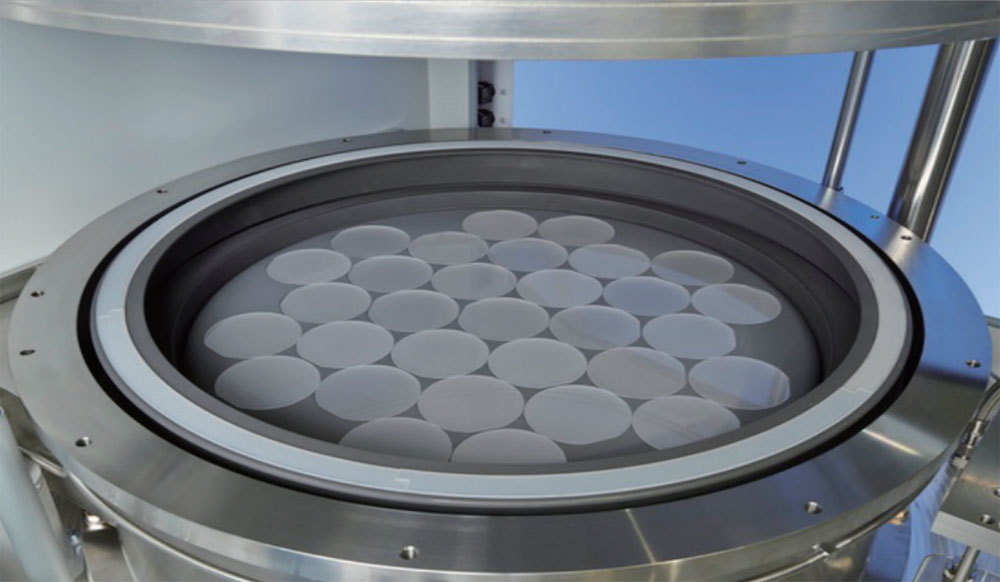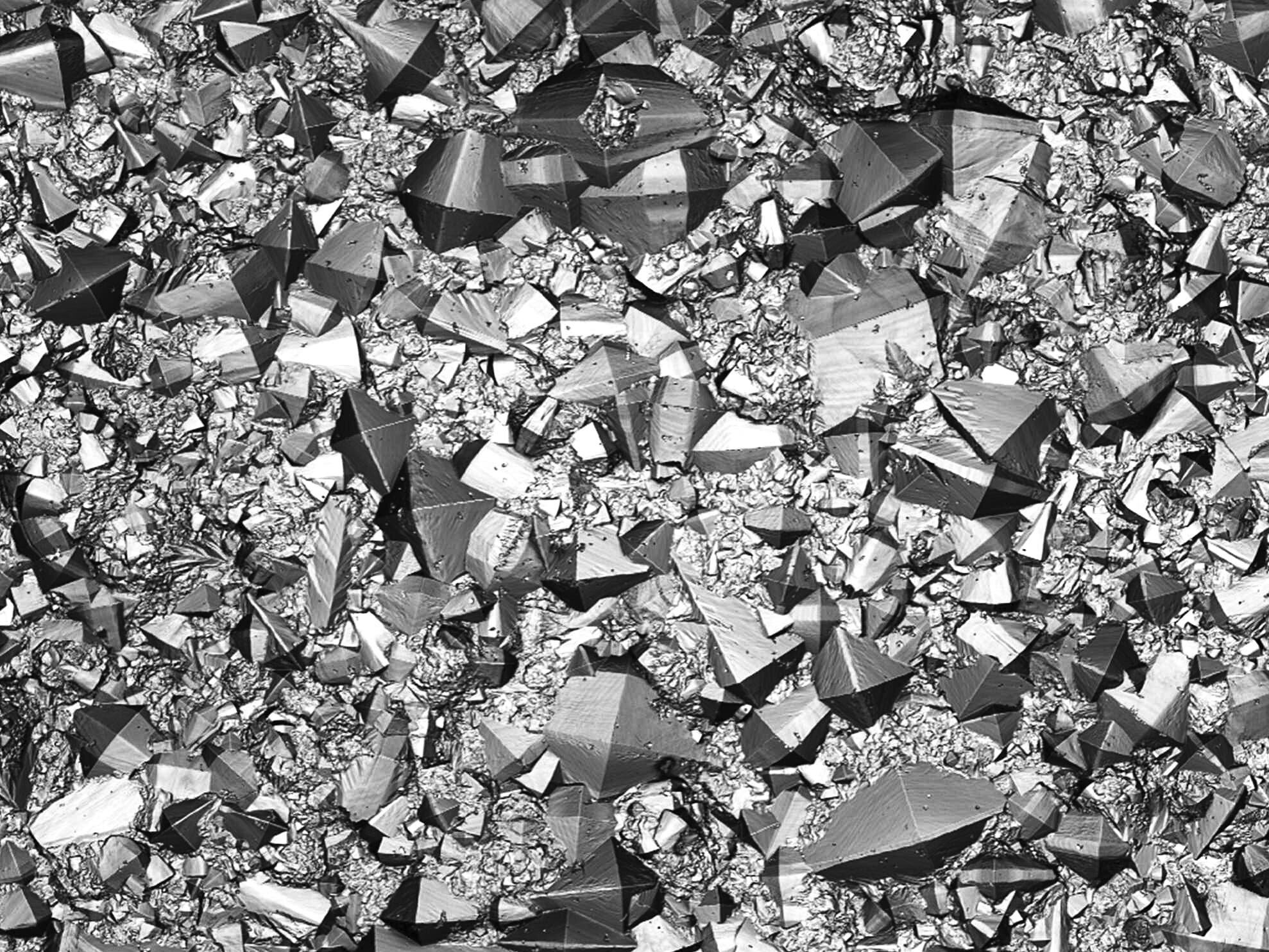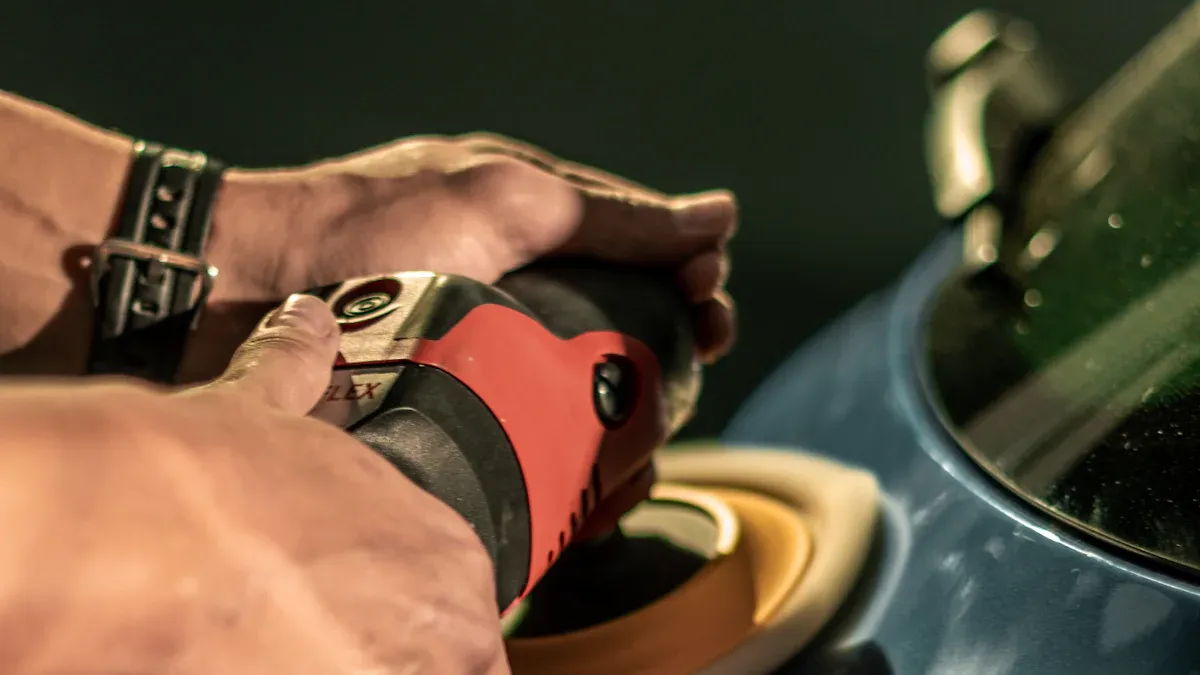
Tungsten carbide coating serves as a robust protective layer composed of tungsten carbide particles. I often see it used to enhance the durability and performance of surfaces exposed to extreme conditions. Its exceptional hardness and resistance to wear make it indispensable in industries requiring high-performance materials.
The global demand for this coating continues to rise. For instance:
- The market is projected to grow at a CAGR of 5.5% from 2018 to 2030.
- Tungsten carbide/cobalt coatings dominate the market, while tungsten carbide/nickel-chrome coatings are gaining traction due to their superior properties.
Industries such as aerospace and oil heavily rely on this technology. Aerospace alone is expected to account for 38.7% of the market share by 2025. Whether applied to cutting tools, turbine blades, or TaC-coated graphite components, tungsten carbide coating ensures longevity and reliability. Additionally, the popularity of Tac Coating is increasing, particularly with the rise of China Tac Coating in the global market, further enhancing the performance of various applications.
Key Takeaways
- Tungsten carbide coating helps parts last longer and need less fixing.
- It is used in many industries like airplanes, oil, and factories.
- The coating is very hard and strong, perfect for tough jobs.
- Methods like HVOF and D-Gun are used for different needs.
- Even though it costs a lot at first, it saves money later by reducing repairs.
What is Tungsten Carbide Coating?

Definition and Composition
Tungsten carbide coating is a specialized protective layer designed to enhance the performance of industrial components. I often describe it as a composite material, primarily made from tungsten carbide particles combined with binders like cobalt or nickel. These binders improve the coating’s toughness and resistance to environmental factors.
The typical composition of tungsten carbide coating includes:
| Material | Percentage |
|---|---|
| Tungsten Carbide | 86% |
| Cobalt | 10% |
| Chromium | 4% |
This unique combination ensures the coating delivers exceptional hardness and durability, making it suitable for demanding applications. The addition of chromium further enhances its corrosion resistance, while nickel improves oxidation resistance in high-temperature environments.
Key Characteristics
Hardness and Durability
Tungsten carbide coating stands out for its remarkable hardness. With a Rockwell hardness rating of 70, it is nearly twice as hard as steel. This extreme hardness allows it to withstand significant wear and tear, even in the most abrasive conditions. I have seen this property make it indispensable in industries like aerospace and manufacturing, where durability is critical.
Resistance to Wear and Corrosion
The coating’s wear and corrosion resistance are equally impressive. Scientific tests, such as the neutral salt spray test (ASTM B117), have demonstrated its ability to resist heavy corrosion. For example, CVD-coated samples showed only light staining after 480 hours, while other materials exhibited severe degradation. Additionally, its low porosity (<1%) ensures minimal exposure to corrosive agents, further extending the lifespan of coated components.
High-Temperature Performance
Tungsten carbide coating excels in high-temperature environments. Its melting point of 5200°F (2871°C) and thermal conductivity of 110 W/m·K make it ideal for applications involving extreme heat. I often recommend it for turbine blades and engine components, where maintaining structural integrity under thermal stress is essential. Its coefficient of thermal expansion (5.5 μm/m·K) also ensures stability during rapid temperature changes.
How is Tungsten Carbide Coating Applied?
Overview of Coating Processes
Applying tungsten carbide coating involves several advanced techniques, each tailored to specific industrial needs. I often see the following methods used:
- High-Velocity Oxygen Fuel (HVOF): Produces dense, cohesive coatings with minimal porosity.
- Detonation Gun (D-Gun): Ensures extremely hard and stable coatings.
- Supersonic Flame Spraying: Effective but less energetic than HVOF.
- Chemical Vapor Deposition (CVD): Ideal for intricate shapes and internal surfaces.
- High Velocity Air Fuel (HVAF): Delivers ductile, corrosion-resistant coatings.
Each method offers unique advantages, making it essential to choose the right one based on the application.
High-Velocity Oxygen Fuel (HVOF) Method
Process Overview
The HVOF method is one of the most reliable ways to apply tungsten carbide coating. It involves the following steps:
- Surface preparation: Clean and roughen the substrate to enhance adhesion.
- Coating material preparation: Mix powdered tungsten carbide with a binder to create the feedstock.
- Feeding the feedstock: Heat and propel the feedstock using a mixture of fuel gas and oxygen.
- Coating deposition: Melt and solidify the particles on the substrate, forming a dense, durable layer.
This process ensures a strong bond between the coating and the substrate, making it ideal for high-performance applications.
Advantages of HVOF
I recommend the HVOF method for its numerous benefits:
- Produces dense coatings with low porosity, enhancing wear and corrosion resistance.
- Works well for components exposed to extreme conditions, such as turbine engines and cutting tools.
- Offers versatility across industries, including aerospace, power generation, and metal production.
The aerospace sector, in particular, heavily relies on HVOF coatings due to their durability and reliability.
Detonation Gun (D-Gun) Method
Process Overview
The D-Gun method uses controlled explosions to apply tungsten carbide coating. A mixture of oxygen and fuel gas ignites in a combustion chamber, propelling the coating material at supersonic speeds onto the substrate. This high-velocity impact creates an extremely dense and hard coating with exceptional bond strength.
Advantages of D-Gun
The D-Gun method stands out for its superior performance in demanding applications:
- Achieves maximum bond strength at lower substrate temperatures.
- Produces coatings with unmatched density and hardness.
- Ideal for components like turbine blade notches, knife-edge seals, and gate valves.
This method excels in applications requiring high wear resistance and durability, such as aviation engines and power generation equipment.
Other Application Methods
Plasma Spraying
Plasma spraying is another effective method for applying tungsten carbide coating. This process uses a high-temperature plasma jet to melt the coating material and spray it onto the substrate. I often recommend this method for its versatility. It works well for a wide range of materials, including metals, ceramics, and composites. The process allows for customization, making it suitable for applications with unique requirements.
One of the key advantages of plasma spraying is its ability to coat large or irregularly shaped surfaces. The method provides a uniform layer, even on complex geometries. However, it has moderate bond strength and higher porosity compared to other methods like HVOF or D-Gun. This makes it less ideal for applications requiring extreme wear resistance or durability.
Cold Spraying
Cold spraying is an emerging technique that offers unique benefits. Unlike plasma spraying, this method does not rely on high temperatures. Instead, it uses high-velocity gas to accelerate powdered tungsten carbide particles onto the substrate. The particles bond through plastic deformation upon impact. I find this method particularly useful for applications where heat-sensitive materials are involved.
Cold spraying minimizes thermal stress, preserving the substrate’s properties. It also produces coatings with low oxidation levels, which enhances corrosion resistance. However, the bond strength is generally lower than that of HVOF or D-Gun methods. This makes it more suitable for applications where thermal damage is a concern rather than extreme durability.
Here’s a comparison of these methods with traditional ones:
| Method | Bond Strength | Porosity | Suitability for Applications |
|---|---|---|---|
| High-Velocity Oxygen Fuel (HVOF) | High | Low | High wear resistance and durability applications |
| Plasma Spraying | Moderate | Higher | Customization options for specific needs |
| Detonation Gun (D-Gun) | Very High | Low | Extremely dense and hard coatings |
| Cold Spraying | Low to Moderate | Low | Heat-sensitive materials and corrosion resistance |
Both plasma spraying and cold spraying expand the possibilities for applying tungsten carbide coating. Each method has its strengths, making it essential to choose based on the specific application requirements.
Benefits and Limitations of Tungsten Carbide Coating
Benefits
Enhanced Wear Resistance
I often emphasize the exceptional wear resistance of tungsten carbide coating. Its dense and cohesive structure allows it to withstand extreme wear conditions, making it ideal for demanding applications like mining and drilling. This coating significantly reduces wear and tear, ensuring components remain functional for extended periods.
- Provides superior protection against abrasion and erosion.
- Extends the service life of industrial tools and machinery.
- Reduces downtime caused by frequent repairs or replacements.
By enhancing durability, this coating ensures that industrial operations run smoothly and efficiently.
Improved Surface Longevity
Tungsten carbide coating plays a critical role in prolonging the lifespan of components. Its ability to resist wear and corrosion ensures that surfaces maintain their integrity over time. I have seen this benefit translate into substantial cost savings for industries. By reducing the need for frequent replacements, businesses can allocate resources more effectively.
Reduced Maintenance Costs
The economic advantages of tungsten carbide coating cannot be overlooked. It minimizes maintenance requirements by protecting components from wear, abrasion, and corrosion. Here’s a breakdown of its impact on maintenance costs:
| Evidence Description | Impact on Maintenance Costs |
|---|---|
| More economical than replacing worn parts. | Reduces costs associated with part removal and replacement. |
| Prolongs the lifespan of components, reducing wear and tear. | Lowers maintenance and replacement expenses. |
| Provides protection against wear, abrasion, and corrosion. | Extends service life, reducing maintenance requirements and downtime. |
These benefits make tungsten carbide coating a cost-effective solution for industries aiming to optimize their operations.
Limitations
High Initial Cost
One of the primary drawbacks of tungsten carbide coating is its high upfront cost. While the initial investment may seem steep, I often remind clients that the long-term savings in maintenance and replacement expenses can offset this cost. Enhanced productivity and extended tool life make it a worthwhile investment for many industries.
Limited Flexibility for Certain Materials
Tungsten carbide coating may not be suitable for all materials. Its application requires specialized equipment and expertise, which can limit its use in some industries. Additionally, its weight can pose challenges in applications where lightweight materials are essential.
Potential for Brittle Fracture in Some Applications
Despite its impressive hardness, tungsten carbide coating can be prone to brittle fractures under certain conditions. This limitation makes it less ideal for applications involving high-impact forces or sudden stress changes. Industries must carefully evaluate their requirements before opting for this coating.
While tungsten carbide coating offers numerous advantages, understanding its limitations is crucial for making informed decisions. By weighing the benefits against the drawbacks, industries can determine whether this coating aligns with their specific needs.
Industries and Applications of Tungsten Carbide Coating

Aerospace Industry
Use in Turbine Blades and Engine Components
I often see tungsten carbide coating playing a vital role in the aerospace industry. Its exceptional hardness and wear resistance make it indispensable for protecting turbine blades and engine components. These coatings shield components from wear, abrasion, and corrosion in harsh environments. For example, turbine engines operate under extreme heat and pressure, and tungsten carbide coatings ensure their durability and efficiency. By extending the service life of these components, the coatings reduce maintenance needs and improve operational reliability.
The aerospace sector also uses tungsten carbide coatings on landing gear components like axles, pins, and bearings. These parts endure heavy loads during take-off and landing. The coating enhances their durability, ensuring they perform reliably under stress. Additionally, it is applied to fuel metering valves, bushings, and flaps track strips, further improving the performance of critical systems.
Oil and Gas Industry
Protection for Drilling Tools and Valves
In the oil and gas industry, tungsten carbide coating provides unmatched protection for drilling tools and valves. I have observed its effectiveness in abrasive and corrosive conditions. For instance, drill bits and stabilizers coated with tungsten carbide withstand harsh drilling environments, including high temperatures and pressures. This coating reduces the frequency of replacements, saving time and costs.
The coating also protects valve stems and pump components in high-pressure environments. It resists corrosion caused by chemicals and gases, maintaining equipment integrity during deep-well drilling operations. Companies face challenges like sulfide stress cracking and rapid corrosion in extreme environments. Tungsten carbide coatings address these issues, ensuring the longevity and reliability of critical equipment.
Manufacturing and Tooling
Coating for Cutting Tools and Dies
Tungsten carbide coating is a game-changer in manufacturing and tooling. I often recommend it for cutting tools and dies due to its exceptional wear resistance. This coating ensures precise and consistent shaping of materials like metal wires. For example, tungsten carbide-coated cutter dies excel in wire drawing and extrusion processes, where durability and accuracy are essential.
The coating also enhances the performance of tools used in high-speed machining and metal forming applications. It protects against wear and corrosion, extending the service life of tools. By reducing downtime and maintenance costs, tungsten carbide coating boosts productivity in manufacturing operations.
Other Applications
Medical Devices
Tungsten carbide coatings have revolutionized the medical field by enhancing the performance and durability of critical devices. I often recommend these coatings for their exceptional biocompatibility, which ensures they do not cause adverse reactions in the human body. This makes them ideal for applications requiring direct contact with tissues or fluids.
- Orthopedic Implants: These coatings are used in joint replacements and spinal implants. They provide superior load-bearing capabilities and extend the lifespan of these critical components.
- Surgical Instruments: Scalpels, forceps, and scissors benefit from tungsten carbide coatings. The enhanced cutting precision and durability improve surgical outcomes.
- Dental Devices: Dental drills and prosthetics coated with tungsten carbide ensure efficient cutting and shaping, making dental procedures smoother and more reliable.
The hardness and wear resistance of tungsten carbide coatings make them indispensable in medical applications. For example, orthopedic implants coated with this material can endure years of stress without degradation. This reliability reduces the need for frequent replacements, improving patient outcomes and reducing healthcare costs.
Tip: Tungsten carbide’s biocompatibility ensures its safe use in medical devices, making it a trusted choice for healthcare professionals.
Automotive Components
In the automotive industry, tungsten carbide coatings play a crucial role in improving the durability and performance of key components. I have seen these coatings enhance wear resistance and protect against abrasion and corrosion, ensuring vehicles operate efficiently under harsh conditions.
- Engine components, such as pistons and valves, benefit significantly from these coatings. They withstand high temperatures and pressures, reducing wear and tear.
- Transmission parts coated with tungsten carbide maintain their integrity over time, even in demanding environments.
- Brake systems also utilize these coatings to enhance performance and longevity, ensuring safety and reliability.
The ability of tungsten carbide coatings to endure extreme operational conditions makes them invaluable in automotive manufacturing. By reducing wear and corrosion, they extend the lifespan of components and minimize maintenance needs. This not only improves vehicle performance but also reduces long-term costs for manufacturers and consumers alike.
Note: Tungsten carbide coatings contribute to the automotive industry’s push for more durable and efficient vehicles, aligning with modern demands for sustainability and reliability.
Tungsten carbide coating offers exceptional hardness, wear resistance, and corrosion protection, making it indispensable for industrial applications. Its low porosity and customizable properties enhance the lifespan of components, reducing maintenance costs and downtime. Industries such as aerospace, oil and gas, and manufacturing rely on this coating to improve performance in high-stress environments.
Key Takeaways:
- Extended service life and reduced costs
- Versatile applications across industries
- Enhanced durability under extreme conditions
This coating’s adaptability and reliability make it a valuable solution for modern industrial challenges.
FAQ
What makes tungsten carbide coating so durable?
Tungsten carbide coating combines extreme hardness with low porosity. This structure resists wear, corrosion, and high temperatures. I often recommend it for applications requiring long-lasting performance under harsh conditions, such as aerospace and manufacturing.
Can tungsten carbide coating be applied to all materials?
No, it works best on metals and certain composites. I’ve found that lightweight or heat-sensitive materials may not be suitable due to the coating’s weight and application process. Always consult an expert to determine compatibility.
How does tungsten carbide coating reduce maintenance costs?
Its wear resistance minimizes damage to components, extending their lifespan. I’ve seen industries save significantly by reducing downtime and replacement expenses. This makes it a cost-effective solution for high-performance applications.
Is tungsten carbide coating environmentally friendly?
Yes, it reduces waste by extending the life of industrial tools and machinery. I also appreciate that it minimizes the need for frequent replacements, which lowers resource consumption and environmental impact.
What industries benefit most from tungsten carbide coating?
Industries like aerospace, oil and gas, and manufacturing rely heavily on it. I’ve observed its effectiveness in protecting turbine blades, drilling tools, and cutting dies, ensuring durability and efficiency in demanding environments.